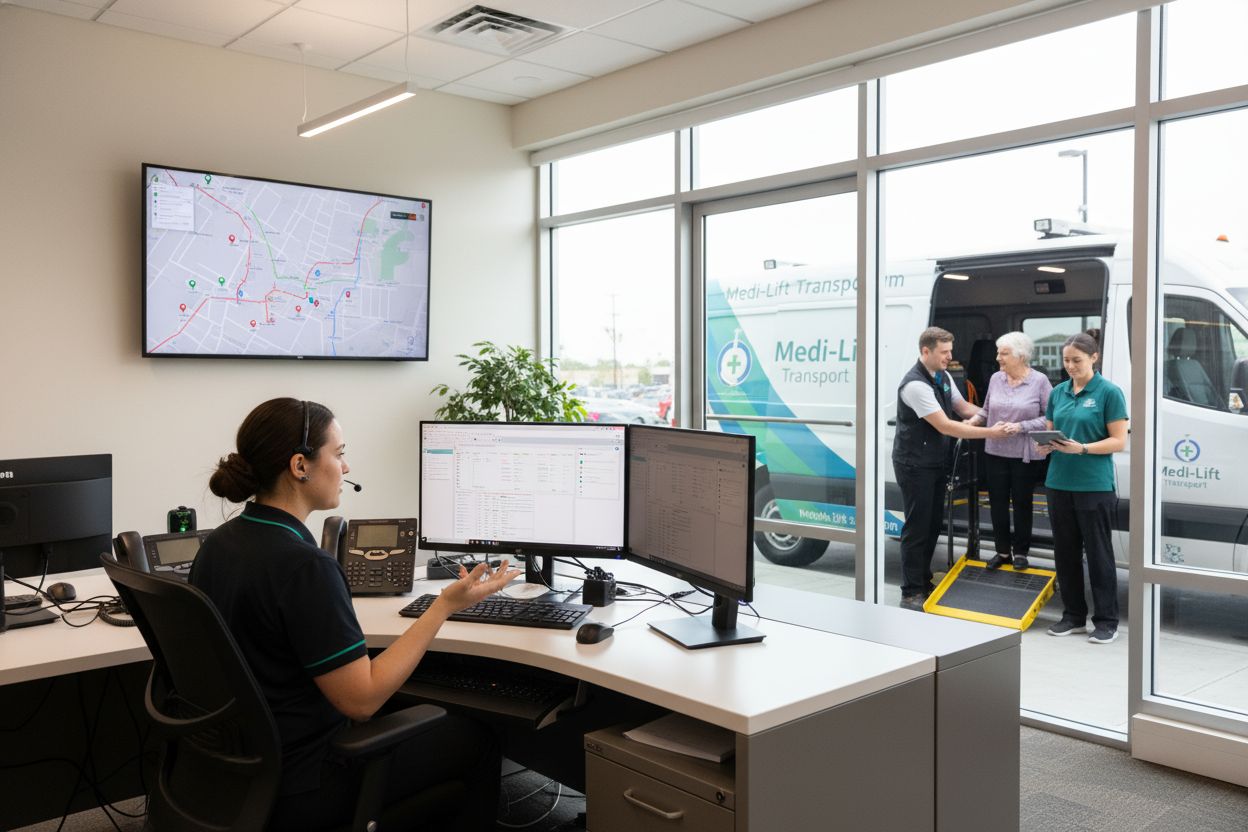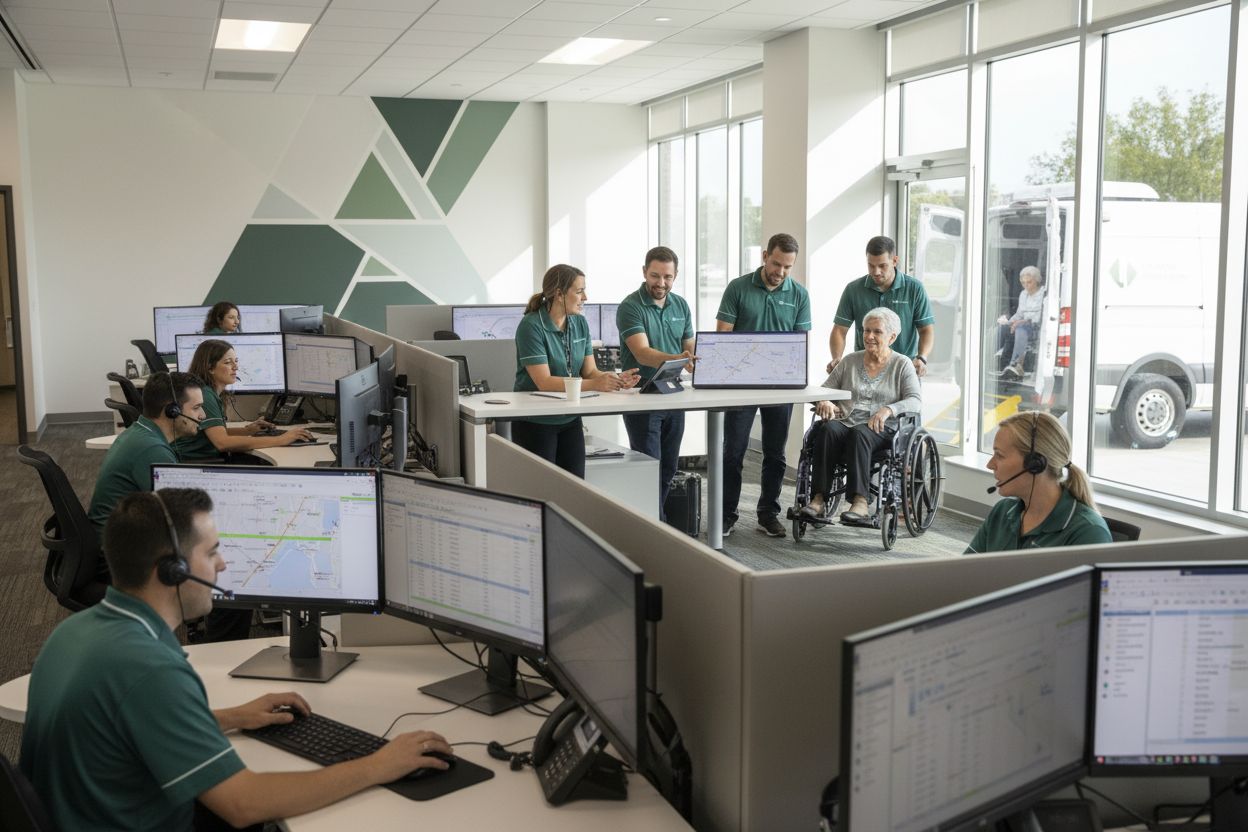Complete Guide to Non Urgent Medical Transport
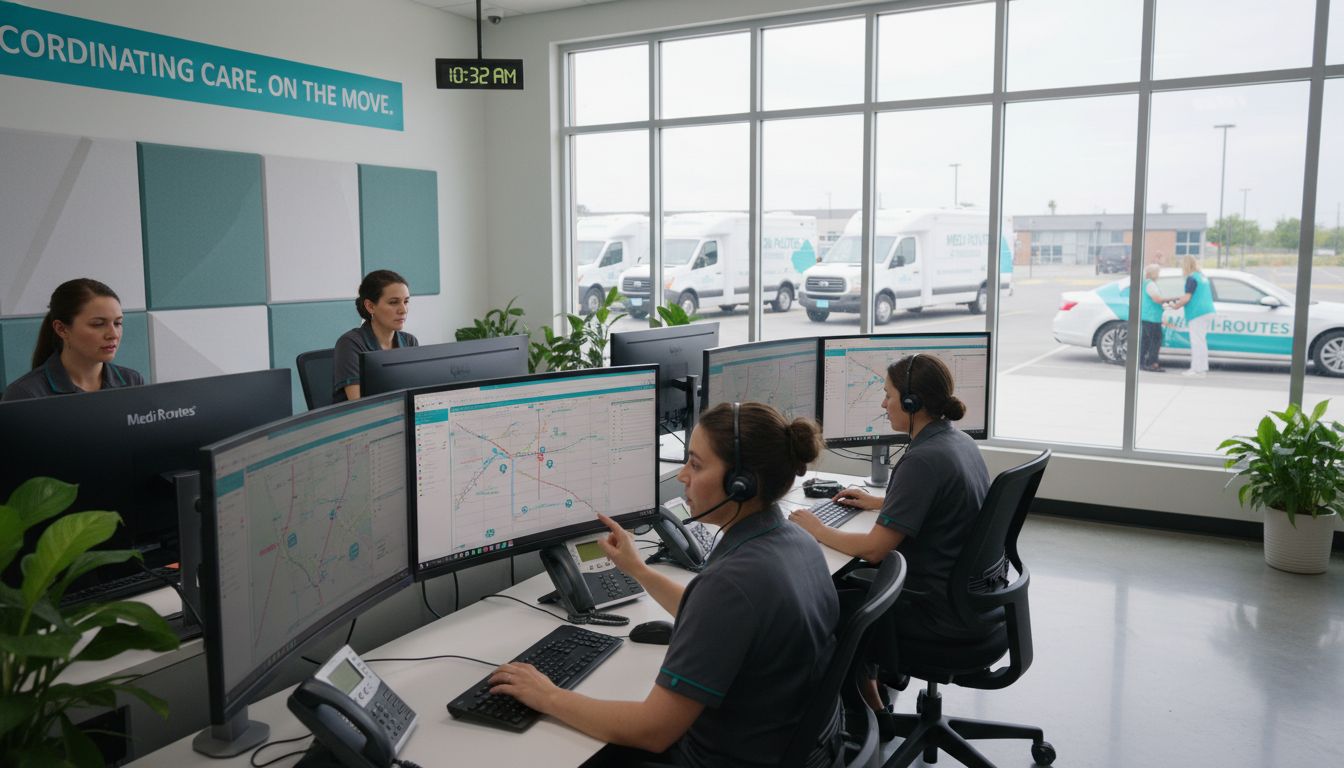
Nearly four million adults miss or delay medical care every year because they have no way to get to appointments. Reliable non-emergency transportation stands between many people and the healthcare they need most. Understanding how these services work, who uses them, and the rules that shape them can help patients, families, and caregivers make informed choices about getting to vital medical care.
Table of Contents
- Defining Non Urgent Medical Transport
- Types and Categories of NEMT Services
- How NEMT Operates in Healthcare
- Regulatory Compliance and Safety Standards
- Cost, Payment, and Coverage Issues
Key Takeaways
| Point | Details |
|---|---|
| Importance of NEMT | Non-Emergency Medical Transportation is vital for patients who lack transportation to medical appointments, ensuring accessibility to necessary healthcare services. |
| Diverse Service Types | NEMT encompasses various transportation options, including wheelchair accessible vans and ambulances, tailored to meet individual patient needs. |
| Operational Framework | NEMT operates through defined processes like eligibility assessment and scheduling, crucial for connecting patients with medical services. |
| Regulatory Compliance | Strict regulatory standards in NEMT guarantee safety and service quality, essential for maintaining patient trust and effective healthcare delivery. |
Defining Non Urgent Medical Transport
Non-Emergency Medical Transportation (NEMT) represents a critical healthcare service designed to help patients who cannot independently transport themselves to medical appointments. According to the Understanding What is Non Emergency Patient Transport guide, these specialized transportation services bridge significant gaps in healthcare accessibility.
According to the Centers for Medicare & Medicaid Services, NEMT is specifically distinguished from emergency transportation by its planned, non-urgent nature. This service provides transportation assistance to individuals who need medical care but are not experiencing immediate health emergencies. Typical NEMT scenarios include:
- Scheduled medical appointments
- Follow-up treatments
- Routine health screenings
- Physical therapy sessions
- Dialysis or ongoing treatment appointments
As research from the Medicaid and CHIP Payment and Access Commission indicates, NEMT is particularly crucial for Medicaid enrollees without alternative transportation options. These services ensure that patients, especially those with mobility challenges, chronic conditions, or limited financial resources, can consistently access necessary healthcare services. By removing transportation barriers, NEMT plays a fundamental role in promoting preventative care, reducing missed appointments, and ultimately improving overall patient health outcomes.
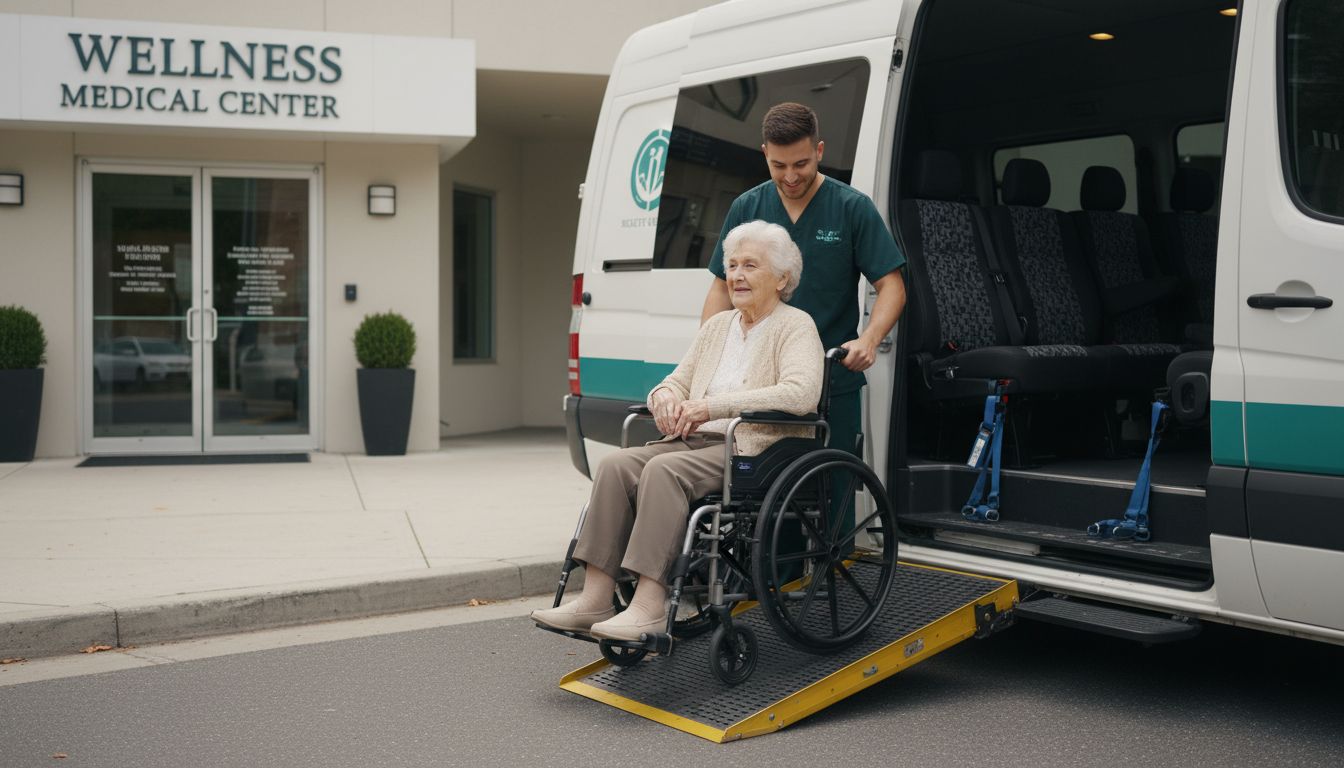
Types and Categories of NEMT Services
Non-Emergency Medical Transportation (NEMT) offers a diverse range of transportation services designed to meet the varied needs of patients with different mobility requirements. According to research from the National Conference of State Legislatures, NEMT services encompass multiple transportation modes that can be strategically matched to individual patient needs.
As detailed in the Understanding NEMT Services: A Comprehensive Guide, NEMT transportation categories typically include:
- Wheelchair Accessible Vans: For patients requiring mobility assistance
- Sedans and Compact Vehicles: For patients with limited mobility who can enter standard vehicles
- Public Transit Passes: For patients who can navigate public transportation independently
- Specialized Medical Shuttles: For group transportation to treatment centers
- Ambulance/Medical Transport Vehicles: For patients needing more advanced medical support
According to SafeRide Health, NEMT services support transportation for critical medical services including dialysis treatments, physical therapy appointments, prenatal visits, mental health services, and routine medical checkups. These transportation options ensure that patients, especially those with chronic conditions, limited financial resources, or mobility challenges, can consistently access necessary healthcare services without transportation barriers.
Here’s a summary of key NEMT service types and their typical use cases:
| Service Type | Patient Needs Addressed | Typical Scenarios |
|---|---|---|
| Wheelchair Accessible Vans | Mobility assistance | Wheelchair users Limited mobility |
| Sedans & Compact Vehicles | Mild mobility challenges | Ambulatory patients Routine checkups |
| Public Transit Passes | Independent navigation | Patients comfortable with public transport |
| Medical Shuttles | Group transport to facilities | Dialysis centers Rehab groups |
| Ambulance/Medical Transport | Advanced medical support | Non-emergency but medically supervised |
How NEMT Operates in Healthcare
Non-Emergency Medical Transportation (NEMT) is a critical healthcare infrastructure designed to ensure patient access to necessary medical services. According to the Centers for Medicare & Medicaid Services, NEMT operates as an essential benefit that bridges transportation gaps for individuals who cannot independently reach medical appointments.
In the Complete Guide to NEMT Medical Transportation, the operational framework of NEMT is explained in detail. The process typically involves several key steps:
- Patient verification and eligibility assessment
- Transportation mode selection based on individual needs
- Coordination with healthcare providers and transportation vendors
- Scheduling and routing optimization
- Real-time tracking and patient support
According to the National Conference of State Legislatures, state Medicaid programs are mandated to provide NEMT services, with each state developing unique delivery models. These models ensure that beneficiaries, particularly those with limited mobility, chronic conditions, or financial constraints, can consistently access critical healthcare services. The operational mechanism of NEMT goes beyond simple transportation, serving as a vital healthcare access enabler that supports preventive care, reduces missed appointments, and ultimately contributes to improved patient health outcomes.
Regulatory Compliance and Safety Standards
Non-Emergency Medical Transportation (NEMT) operates within a complex regulatory framework designed to ensure patient safety, service quality, and cost-effective healthcare delivery. According to the Centers for Medicare & Medicaid Services, regulatory compliance in NEMT involves stringent guidelines that providers must meticulously follow.
In the Understanding Regulatory Compliance in Healthcare resource, critical compliance elements are outlined. The key regulatory requirements typically include:
- Vehicle safety and maintenance standards
- Driver qualification and background checks
- Patient privacy and confidentiality protocols
- Accessibility accommodations for patients with disabilities
- Documentation and reporting requirements
- Insurance and liability coverage
The National Conference of State Legislatures highlights that states may implement additional compliance mechanisms such as copayment structures, trip number limitations, and prior approval processes. These regulatory measures serve multiple purposes: controlling transportation costs, preventing fraudulent service claims, and ensuring that NEMT services are delivered efficiently and ethically. By establishing comprehensive safety standards and compliance protocols, healthcare systems can guarantee that non-emergency medical transportation remains a reliable, secure, and patient-centered service that supports critical healthcare access for vulnerable populations.
Cost, Payment, and Coverage Issues
Non-Emergency Medical Transportation (NEMT) represents a complex financial ecosystem where multiple stakeholders manage funding, reimbursement, and cost control mechanisms. Medicaid serves as the primary funding source for these critical transportation services, with each state developing unique approaches to financial management and service delivery.
In the 7 Ways to Lower NEMT Costs for Medicare Advantage Plans, key financial strategies are explored. The typical cost and payment landscape for NEMT includes:
- State-specific Medicaid funding models
- Managed Care Organization (MCO) involvement
- Nominal patient copayments
- Trip number limitations
- Prior authorization requirements
- Sliding scale fee structures
- Performance-based reimbursement mechanisms
According to the National Conference of State Legislatures, states employ various cost management techniques to control NEMT expenditures. These may include implementing modest copayment requirements, restricting the total number of authorized trips, and mandating prior approval processes. By strategically designing these financial frameworks, healthcare systems can balance patient access needs with fiscal responsibility, ensuring that vulnerable populations receive necessary transportation services while maintaining sustainable operational costs.
Unlock Seamless Non Urgent Medical Transport with VectorCare
Navigating the complexities of Non-Emergency Medical Transportation can be overwhelming. Challenges like coordinating varied transportation modes, ensuring compliance with safety standards, and managing costs often create barriers—resulting in missed appointments and frustrated patients. VectorCare understands these pain points by offering a digital platform designed to optimize patient logistics, automate scheduling, and strengthen communication between healthcare providers, payers, and transport vendors. Our AI-driven dispatching and real-time updates empower you to remove transportation obstacles and improve outcomes for patients with mobility challenges or chronic conditions.
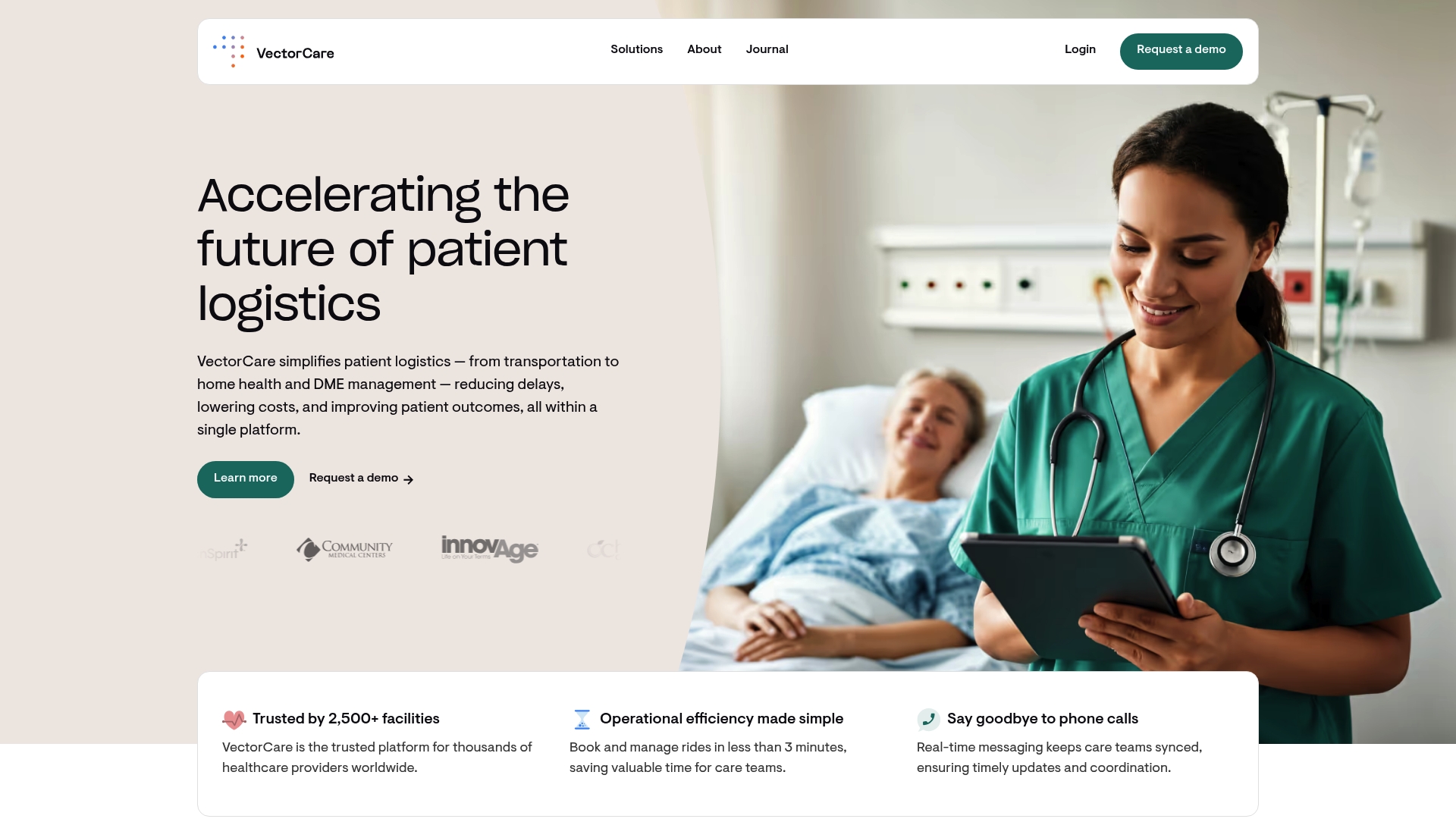
Experience how VectorCare streamlines your NEMT operations today by enhancing efficiency, reducing administrative burdens, and securing regulatory compliance. Don’t wait until delays or cost overruns impact critical care access. Visit VectorCare’s platform now to discover solutions tailored for non urgent medical transport. Take the next step to transform healthcare transportation logistics by learning more in our Complete Guide to Non Emergency Patient Transport. Get started with VectorCare and empower your team to deliver consistent, cost-effective, and patient-centered transportation services.
Frequently Asked Questions
What is Non-Emergency Medical Transportation (NEMT)?
Non-Emergency Medical Transportation (NEMT) is a healthcare service that provides transportation for patients who need to attend medical appointments but cannot transport themselves. It includes planned transport for scenarios such as routine checkups, physical therapy sessions, and follow-up treatments.
Who is eligible for NEMT services?
Eligibility for NEMT services typically includes individuals enrolled in Medicaid who do not have other means of transportation. These services are vital for those with mobility challenges, chronic conditions, or limited financial resources to ensure they access necessary medical care.
What types of vehicles are used in NEMT services?
NEMT services utilize various vehicle types based on patient needs, including wheelchair accessible vans for those with limited mobility, sedans for ambulatory patients, public transit passes for independent navigators, specialized medical shuttles for group transport, and ambulance transport for patients requiring advanced medical support.
How does the NEMT process work?
The NEMT process involves several steps: patient verification and eligibility assessment, transportation mode selection tailored to individual needs, coordination with healthcare providers, scheduling and routing optimization, and real-time tracking to ensure timely patient support.

